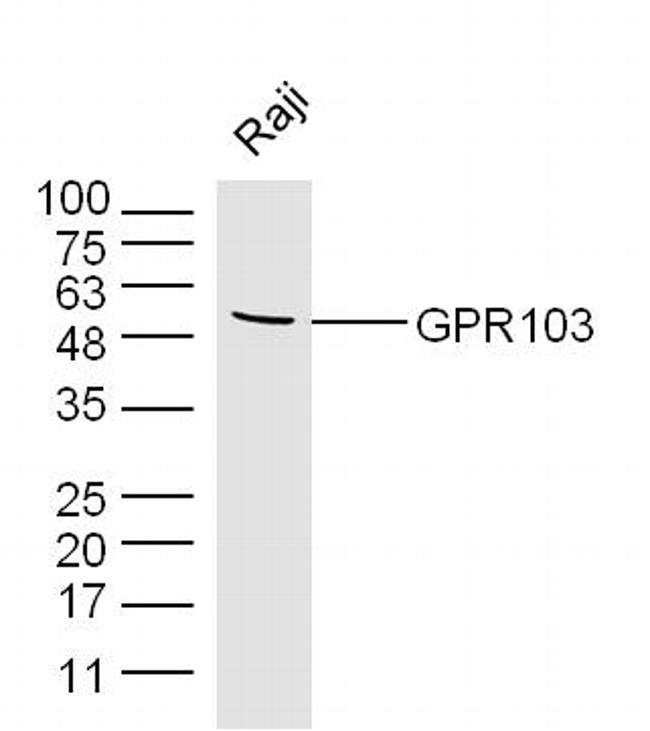Search Thermo Fisher Scientific
产品信息
BS-13512R
种属反应
宿主/亚型
分类
类型
抗原
偶联物
形式
浓度
纯化类型
保存液
内含物
保存条件
运输条件
靶标信息
G protein-coupled receptors (GPRs) are a protein family of transmembrane receptors that transmit an extracellular signal (ligand binding) into an intracellular signal (G protein activation). GPR signaling is an evolutionarily ancient mechanism used by all eukaryotes to sense environmental stimuli and mediate cell-cell communication. All of the receptors have seven membrane-spanning domains and the extracellular parts of the receptor can be glycosylated. These extracellular loops also contain two highly conserved cysteine residues which create disulfide bonds to stabilize the receptor structure. GPR103 is a 455 amino acid protein with highest expression in the brain, retina, trigeminal ganglion, hypothalamus and vestibular nucleus. In peripheral tissues, GPR103 is expressed only in the heart, kidney and testis. GPR103 may regulate adrenal function. A hypothalamic neuropeptide of the RFamide family (26RFa) acts as an endogenous ligand for GPR103.
仅用于科研。不用于诊断过程。未经明确授权不得转售。
篇参考文献 (0)
生物信息学
蛋白别名: AQ27; G protein-coupled receptor 103; G-protein coupled receptor 103; Orexigenic neuropeptide QRFP receptor; peptide P518 receptor; Pyroglutamylated RF-amide peptide receptor; pyroglutamylated RFamide peptide receptor; QRFP receptor; SP9155
基因别名: AQ27; GPR103; QRFPR; SP9155
UniProt ID: (Human) Q96P65, (Rat) P83858, (Mouse) P83861
Entrez Gene ID: (Human) 84109, (Rat) 310327, (Mouse) 229214




